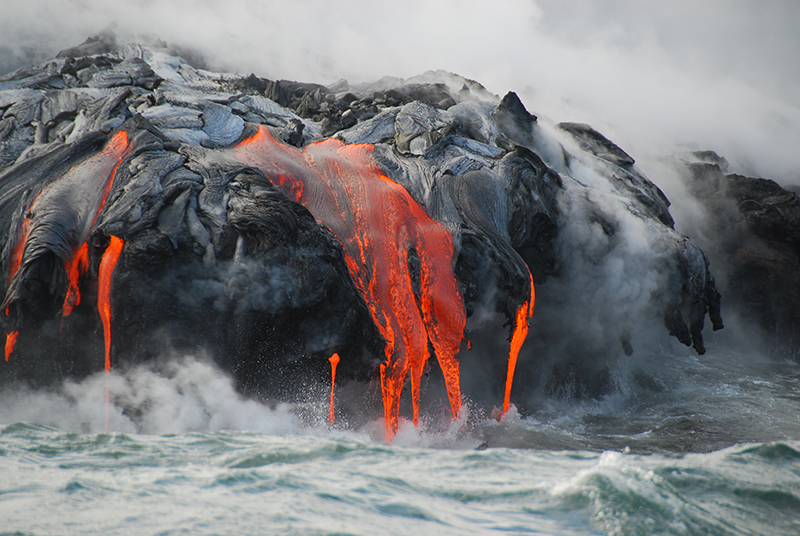Key Concepts
The form of energy transfer that occurs due to a temperature difference between a higher temperature “source” and a lower temperature “sink.” Heat transfer always occurs between two objects when they exist at different temperatures (see illustration). Conduction is the form of heat transfer that occurs when there is no bulk motion between the two substances; an example is the heat transfer between a hot cup of coffee or tea and the hand holding the mug. Convection is the form of heat transfer that occurs between two substances where one or both of the substances has bulk motion; an example is the heat transfer between the air from a fan and a person's body. Radiation is the only form of heat transfer that does not require a medium to transfer energy from one substance to another. In other words, radiation can occur in a vacuum, whereas, convection and conduction cannot. Radiation is a stronger function of temperature than convection and conduction and typically becomes more important at higher temperatures compared with conduction and convection. Radiation is the form of heat transfer that transmits the energy of the sun to the planet Earth. Each form of heat transfer has related governing principles. See also: Energy; Heat conduction; Heat convection; Heat transfer; Radiation; Temperature

Some may mistakenly think heat as the energy of an object or system, but that is incorrect. An object or system possesses internal energy and other forms of energy that are directly related to the object or system temperature. Generally, a system with a higher temperature possesses more energy than a system with a lower temperature, but until the system interacts with another object or system at a different temperature, heat transfer does not occur. See also: Internal energy
For the purposes of thermodynamics, it is convenient to define all energy while in transit as either heat transfer or work transfer. As defined earlier, heat transfer is a result of a temperature difference between two objects. Work transfer is the energy transfer due to difference in any other potential, such as height. Work transfer can be thought of as the energy required to lift a weight or stretch a spring. Heat transfer differs from work transfer in that heat transfer is limited by the second law of thermodynamics. See also: Thermodynamic principles; Work
The unit of heat transfer, work transfer, and energy in the International System of Units is the joule, symbolized J. Calorimetry is the measurement of the quantity of heat transferred to or from an object. The measure of the heat required to raise the temperature of a substance is known as specific heat. See also: Calorimetry; Specific heat; Specific heat of solids; Units of measurement





